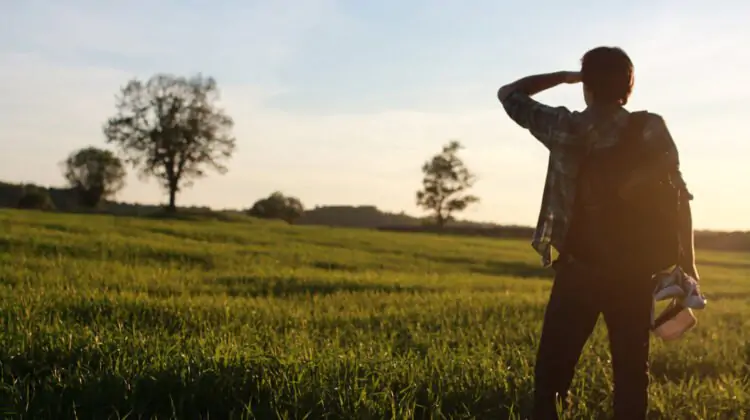The Camino de Santiago is one of the most revered pilgrimage routes in the world, drawing thousands of travelers every year. Spanning multiple routes across Europe, it culminates in the stunning city of Santiago de Compostela in Spain, where the remains of Saint James are believed to be housed. This historic trail has been traversed for centuries, offering a unique blend of spiritual, cultural, and physical challenges that leave an indelible mark on all who undertake it.
Pilgrims from all walks of life embark on this journey, motivated by faith, personal growth, or the sheer joy of adventure. Whether walking the popular Camino Francés, the scenic Camino Portugués, or a lesser-known route, each traveler experiences a deep connection with history and nature. The trail is dotted with medieval churches, charming villages, and breathtaking landscapes that enhance the sense of purpose and self-discovery.
Preparing for the Camino de Santiago
Proper preparation is essential for making the most of your Camino experience. The first step is choosing the right route based on distance, difficulty, and time constraints. While some paths take a few weeks to complete, others can be finished in just a few days, allowing flexibility for different schedules and fitness levels.
Physical training is crucial to ensure endurance and prevent injuries. Walking long distances daily can be challenging, so it is advisable to practice by hiking regularly with a loaded backpack. Additionally, selecting the right gear, such as comfortable footwear, breathable clothing, and a durable backpack, significantly contributes to a successful journey.
Accommodation along the Camino varies from traditional albergues (pilgrim hostels) to private guesthouses and hotels. Booking in advance can be beneficial during peak seasons, but many travelers prefer the spontaneity of securing lodging as they go. Meal planning is also important, with numerous local restaurants offering authentic Spanish cuisine to keep energy levels high.
The Spiritual and Personal Growth Aspects

One of the most profound aspects of walking the Camino de Santiago is the opportunity for introspection and personal growth. As pilgrims navigate the long, winding paths, they often experience moments of solitude that encourage deep reflection. The simplicity of daily life on the trail fosters a sense of mindfulness, allowing walkers to appreciate the present moment fully.
Many people undertake the pilgrimage seeking clarity, healing, or a fresh perspective on life. The Camino has a way of stripping away distractions, leaving room for personal transformation. Conversations with fellow pilgrims from different backgrounds can also be eye-opening, providing new insights and fostering lifelong friendships.
The spiritual aspect of the Camino is undeniable, even for those without religious affiliations. Whether attending a pilgrim’s mass, lighting a candle in a centuries-old cathedral, or simply walking in silence, many find a renewed sense of faith and inner peace by the journey’s end.
Experiencing the Natural Beauty Along the Route
The Camino offers an ever-changing landscape that captivates the senses. From rolling vineyards and lush forests to rugged mountain trails and coastal paths, every section has its own unique charm. The terrain varies depending on the route, with some sections offering gentle strolls through farmland, while others require more strenuous climbs over hills and rocky paths.
Encounters with nature are one of the highlights of the pilgrimage. The sound of birds chirping in the early morning, the sight of golden sunsets over distant horizons, and the fresh scent of eucalyptus groves all contribute to the magic of the Camino. These moments create an overwhelming sense of gratitude and connection with the world.
The Social Connection and Camino Community
A unique aspect of the Camino de Santiago is the camaraderie shared among pilgrims. There is an unspoken bond that forms between travelers, as everyone shares the same struggles and triumphs along the way. Whether through a simple exchange of words, shared meals, or encouraging gestures, the spirit of kindness and generosity is evident throughout the journey.
Hostels and rest stops often serve as meeting points where stories are exchanged and friendships are forged. Pilgrims from different nationalities and backgrounds come together, creating a multicultural experience that is enriching and enlightening. Even solo travelers find that they are never truly alone on the Camino, as the welcoming atmosphere fosters meaningful connections.
The Ultimate Reward: Reaching Santiago de Compostela
Arriving in Santiago de Compostela is an emotional and rewarding experience. The sight of the grand cathedral of Santiago, standing tall in the historic square, brings a profound sense of accomplishment. Many pilgrims attend the Pilgrim’s Mass, a moving ceremony where achievements are celebrated and the journey is honored.
For some, the Camino does not end at Santiago. Some choose to continue walking to Finisterre, known as the “End of the World,” where they can witness the breathtaking coastal views and reflect on their journey. Others take the lessons learned from the pilgrimage and apply them to their daily lives, carrying the spirit of the Camino with them forever.
Final Thoughts: Why Walk the Camino de Santiago?
Walking the Camino de Santiago is more than just a physical journey—it is an adventure of the mind, body, and soul. Whether seeking spiritual awakening, self-discovery, or simply a break from routine life, this pilgrimage offers something for everyone. The experiences gained along the trail shape perspectives, forge new friendships, and leave an everlasting impact.
If you have ever considered embarking on a transformative journey, the Camino awaits. Step onto the path, embrace the challenge, and allow the magic of the pilgrimage to unfold.
